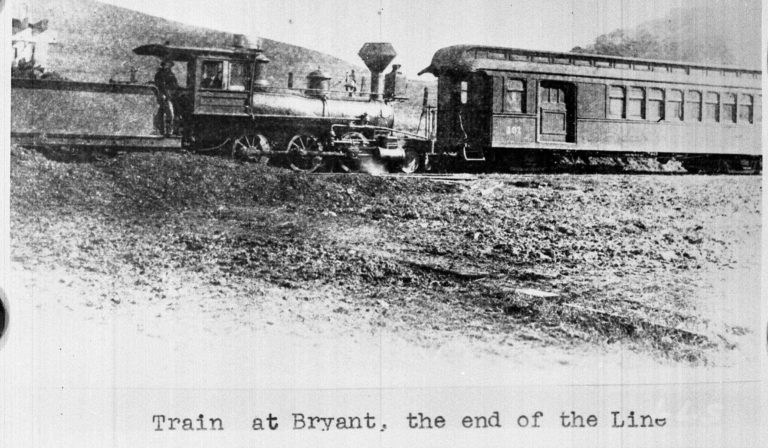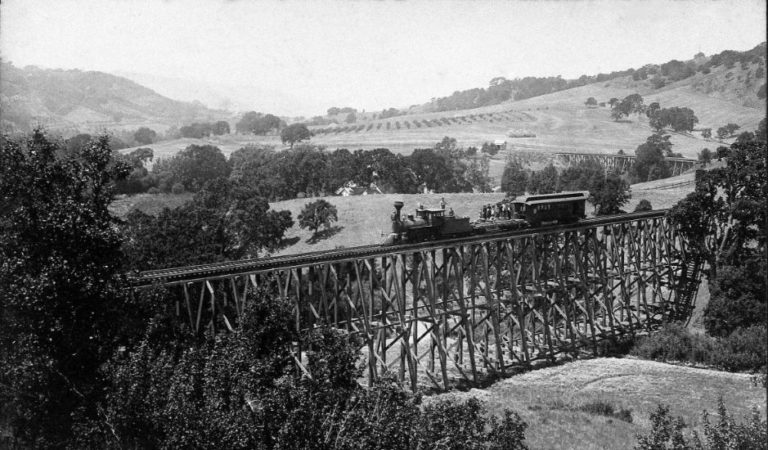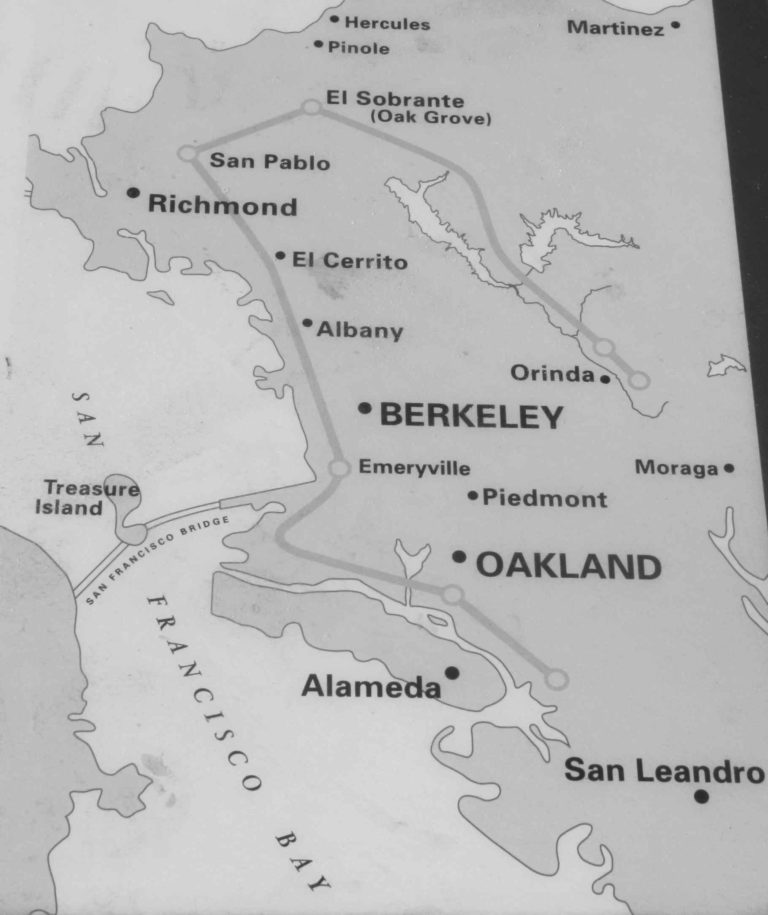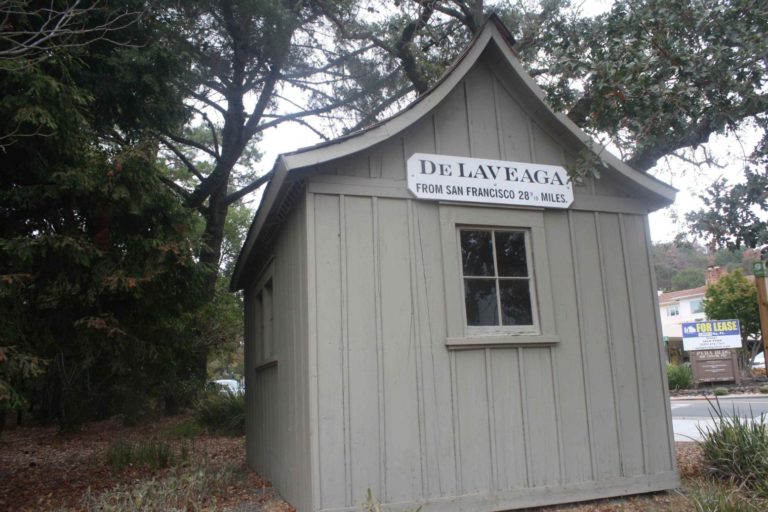THE STORY OF THE CALIFORNIA - NEVADA RAILROAD
~ Hayseed Siftings, Orinda Park, CA, April 1893.
In 1881 a company was set up to establish the California and Nevada Railroad, a narrow-gauge line that promised investors a route that began in Emeryville, continued all the way to the silver mining camp of Bodie, then on into Nevada and possibly even Utah.
By 1897 almost 23 miles of track had been laid and Orinda boasted three stations:
- Orinda Park Station just south of Bear Creek Road.
- De Laveaga Station near Miner Road.
- Bryant Station, slightly south of where the Theatre stands today.
And that is where the tracks petered out.
Although a rail bed was cut along present-day Moraga Way, the entire enterprise was beset by so many disasters from the very start that the tracks never got beyond Orinda.
Sadly, by the turn of the century, the dream had been entirely abandoned.
However, in those few years that this “rheumatic locomotive” actually ran (although never in accordance with the timetable) it was much beloved by day-trippers picnicking in Orinda’s leafy spots and proved very useful to local farmers transporting their harvests to the Emeryville docks.
But sparks from the wood-burning engine set hay fields on fire at least once a week and the crew got so used to the train derailing at the notoriously swampy “Frenchman’s curve” that they had to keep blocks on hand, with a 20ft long lever, so that the wheels — with the assistance of half the passengers — could be jacked back into place.
Today you’ll find the last of the Orinda depots, the lovingly restored de Laveaga station, on the corner of Bates Blvd and Davis Road.
Preserved by the de Laveaga family on their Bien Venida property for many years, the little station house was graciously presented to the City in 1999 and designated an Orinda Historical Landmark in April 2000.




